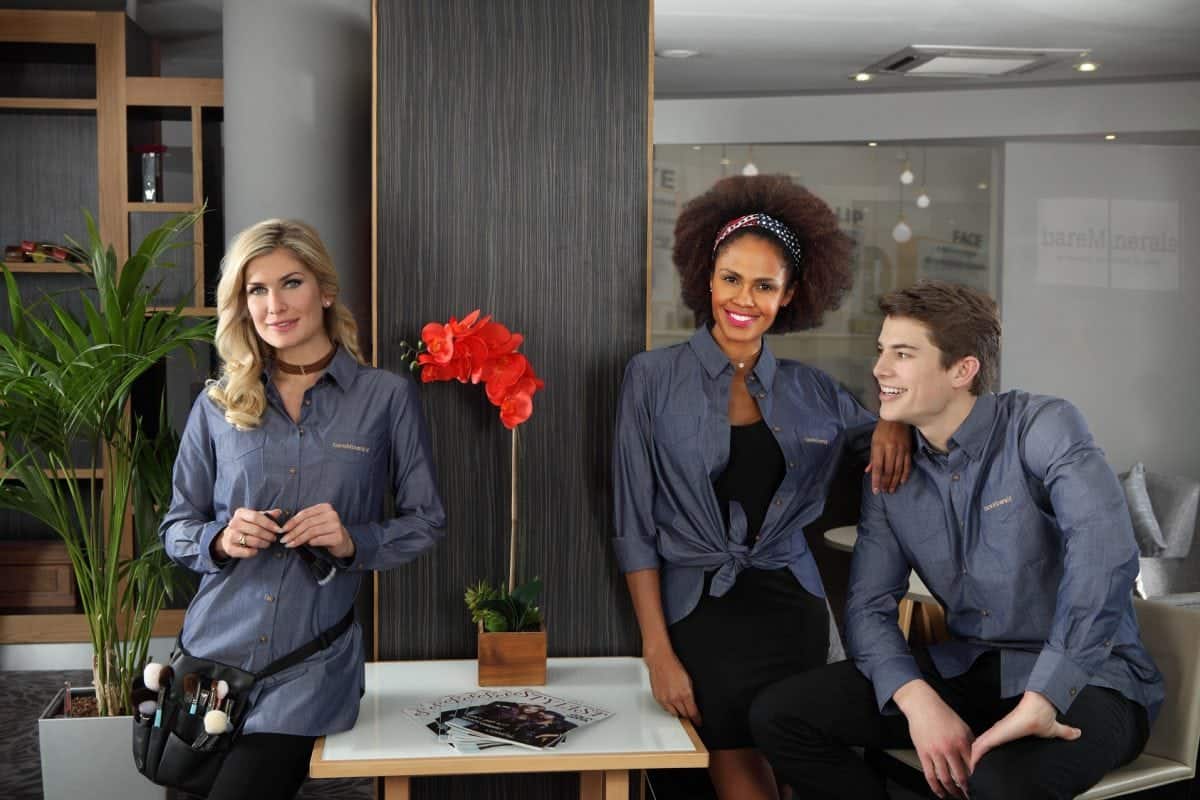
By Susanne Malim, Managing Director of Jermyn Street Design
As usual, this summer saw Wimbledon officials strictly enforcing the players’ “all whites” dress code, enforcing the view that we are all sticklers for formal attire at every occasion. Uniforms and dress codes certainly play a role in certain situations, but, times are changing!
In response to changing trends, corporatewear designers are bringing laid back style and individuality to uniforms. Given the evidence behind this growing trend, Wimbledon officials may even be persuaded to embrace it.
In June 2017, the Speaker of the House announced that ties were no longer a requirement. Shortly after, even the Queen went casual for the State Opening of Parliament, opting for a hat instead of her traditional crown. And we probably have millennials to thank for that (well, perhaps not the Queen).
Unfairly stereotyped as the self-obsessed, want-it-all slacker generation, millennials – those born between 1980 and 1999 – are undeniably changing the face of the workplace: seeking jobs with a sense of purpose, selective about aligning with corporate values, demanding flexibility, good perks and the ability to express themselves.
These attitudes mean that if employers wish to attract talent, they need to adapt. And that also goes for what employees are expected to wear. In the last few years, we’ve seen a definite trend towards more casual uniforms in the retail and service sector. And not only that, employers are allowing staff to exhibit more individuality in the way they present themselves. Now you could argue that this is just the latest fashion trend, just as the heritage look was popular before, but it doesn’t appear to be a fad. In a Ypulse survey of millennials, 55% agreed with the statement, “I don’t follow trends. I like to have my own individual style”.
UNIFORM DESIGN CAN EVEN MAKE AN EMPLOYER MORE ATTRACTIVE TO YOUNGER WORKERS
Last year, Starbucks introduced its new dress code, with only one item – the distinctive green apron – as a compulsory uniform. As for what goes under the apron, Starbucks actively encouraged its employees to accessorise with coloured hair, tattoos, and even fedoras if they so wished! While Starbucks may be trying to cultivate a more hipster vibe in its branding to be a more attractive employer to younger workers, the approach also has some economic advantages. Other companies are adopting a similar strategy by identifying a key piece and budgeting around it.
Uniform designers are receiving more requests for corporate wear that offers both functionality and allows for personal expression. In terms of style and cut, employees are increasingly demanding outfits that make them look and feel good.
So that means clothes which are stylish, fashionable, comfortable, and represent not only the brand, but how they see themselves. Basically, corporate wear now needs to be stylish enough that people want to work for you because they love your uniform, and even your customers want to wear them.
KEEPING IT BOTH CASUAL AND IDENTIFIABLE
Bare Minerals, a West Coast, natural beauty brand, is a case in point. Their ethos is about being original, natural and connected. They wanted a makeup shirt for their beauty counter staff that would reflect this. Bare Minerals requested a versatile artisanal shirt that’s casual, easily identifiable to customers, but allows employees the freedom to wear it in different ways. JSD designers took the brief and created a long, lightweight shirt in a blue chambray fabric that looks great worn loose, belted or tucked in.
Hotel chains, known for their more formal and fitted outfits, are also taking notice. The Mondrian Hotel introduced a more casual fashion aesthetic into their uniforms in 2015 by incorporating denim into their outfits, and putting Reception staff in sweatshirts. Another leading European hotel chain is embracing a more sporty look with softer fabric and tailoring to better reflect its leisure hospitality brand, and to differentiate it from its more upmarket sister hotels.
HOW DO WE DESIGN STAFF UNIFORMS TO LOOK GREAT AND ALSO BE COMFORTABLE TO WEAR?
The story’s the same in high street retail, and for food and hospitality businesses. We are seeing more t-shirts and polo shirts, but using the latest fabric technology – putting the wearer’s comfort first. Bespoke uniform suppliers are taking the technical advances in the supply chain commonly used by high street fashion retailers and applying them to corporate wear. Gone are the itchy, scratchy, sweaty tops of old. In come wickable, breathable, double-knit fabrics that offer better comfort, are easy to care for, and budget-friendly. It allows for a better user experience and a happier employee.
Luxury brands too are tapping into this more relaxed, loungewear look. Investing in a bespoke uniform designer gives you more options. Subtle tailoring can provide a better shape and definition to garments that are stylish but classic enough to outlast the latest fashion trend. A wider choice of fabrics and the incorporation of technical materials can improve the functionality, wearability and durability of an outfit over an off-the-shelf solution.
While uniforms must reflect corporate identity and your job role, they don’t need to define who you are as a person. Giving employees more space to express themselves more confidently in their work through their attire will reap rewards for organisations. Bearing in mind that accountancy firm Deloitte predicts that millennials will make up 75% of the global workforce by 2025, companies need to ensure they are positioned well to attract this group of individuals.
RELATED
https://www.thelondoneconomic.com/food-drink/are-robot-servers-the-food-industrys-next-big-thing/08/09/